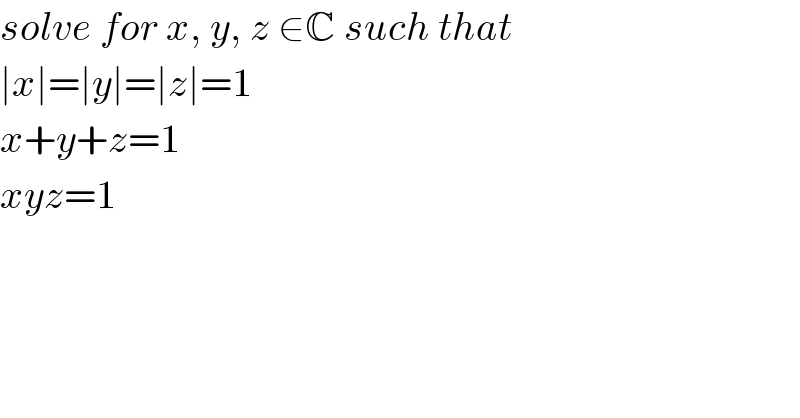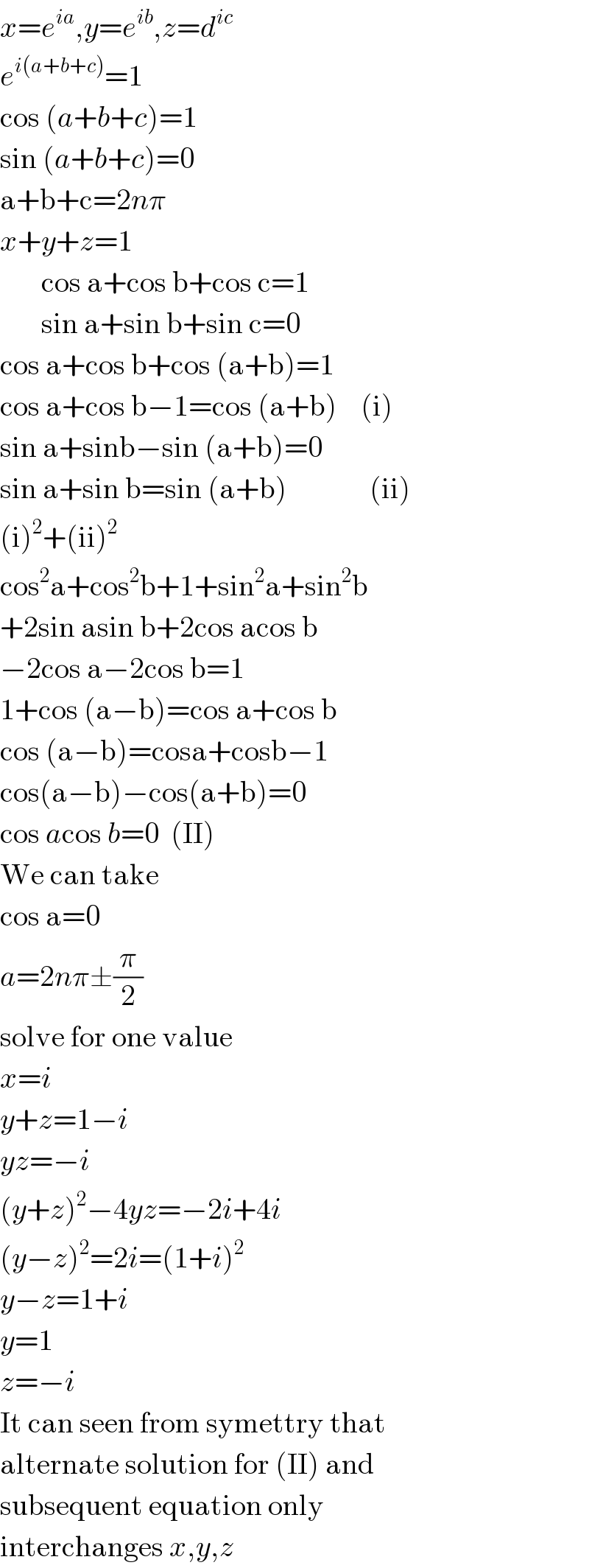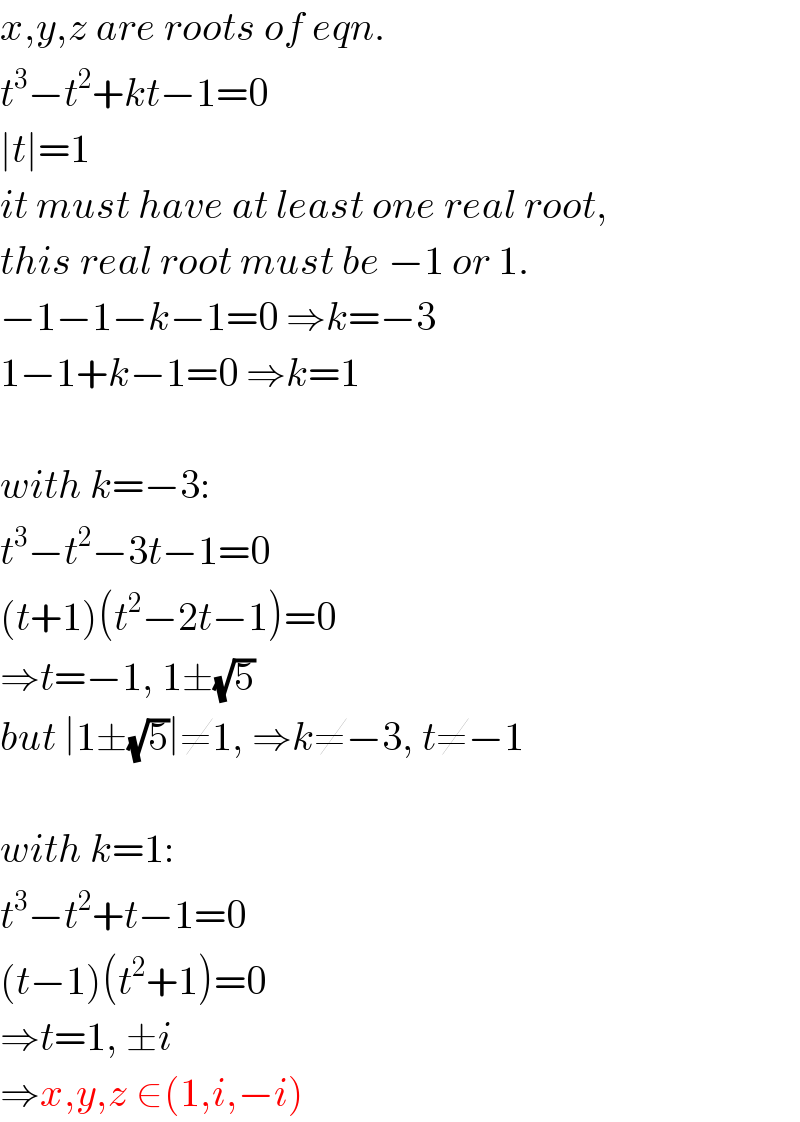Question Number 95062 by mr W last updated on 22/May/20

Commented by EmericGent last updated on 22/May/20
BlackPenRedPen solved it today ^^ (1;i;-i)
Commented by mr W last updated on 23/May/20

Commented by EmericGent last updated on 22/May/20
I know, but posted the video this morning
Commented by mr W last updated on 22/May/20

Commented by prakash jain last updated on 23/May/20

Commented by mr W last updated on 23/May/20

Commented by mr W last updated on 23/May/20

